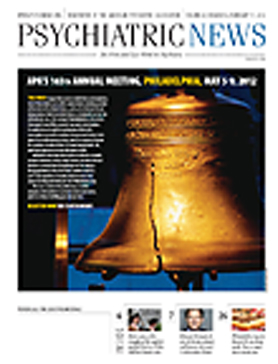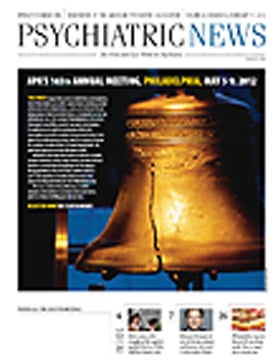To art lovers it likely borders on scandal, but millions of people know of one of the world’s great art museums for what occurred on its front steps rather than for the staggering collection of works that dwell within.
For anyone who scales those steps during the APA annual meeting, however, the visions that linger will be the bounty of eye-popping art works inside rather than actor Sylvester Stallone’s triumphal sprint up those famed steps in the film “Rocky.” The vast collection of paintings, sculpture, and crafts represents just about every region of the globe and covers every era back to the third century B.C., perhaps a fitting starting point for an edifice that looks like a Greco-Roman temple.
Whether you have a passion for—or just a budding interest in—East Asian art, Renaissance masters, Impressionism, or American arts and crafts, you will find ample stimulation. Among the many iconic masterworks in the permanent collection are Paul Cezanne’s “Bathers” and Marcel Duchamp’s “Nude Descending a Staircase,” once considered scandalous but now, well, you can judge for yourself.
The museum also offers galleries displaying a vast collection of Amish and Shaker crafts and paintings by Philadelphia native Thomas Eakins.
Several treats will tempt art devotees who visit the museum during the APA annual meeting in May.
Certain to be a blockbuster exhibit is the one that opened February 1 titled “Van Gogh Up Close.” The artist’s powerful and exuberant use of color and his startlingly emotional depictions of a natural world that is rarely placid have attracted huge crowds wherever they are displayed.
The musuem’s exhibit of some 40 paintings focuses on Van Gogh’s later years—from 1886 to his death in 1890— when he was especially prolific and painted some of his most famous works. According to the museum, this is “the first exhibition to explore the reasons and means by which this impassioned artist made such unusual changes to his painting style in the final years of his life.” These later works began to show the influences of Japanese woodblock prints with “their deep views of the countryside and high horizon lines,” while in the last two years of his life, his landscapes became more “tightly packed, more constructive works,” the museum explains.
The Van Gogh exhibit closes May 6, so make plans to add it to your agenda for the annual meeting’s early days.
In addition, the new Anne d’Harnoncourt Sculpture Garden will debut with an exhibit of works by 20th-century American sculptor Isamu Noguchi, whose works reflect his American heritage as well as his father’s Japanese background. The museum’s Web site notes that his early works, created in the 1920s, were made under the tutelage of famous sculptor Constantin Brancusi in the 1920s when both lived in France. By the mid-1960s, Noguchi was creating most of his works in stone. Having established a studio on the Japanese island of Shikoku by the decade’s end, he focused on large granite and basalt sculptures that brought him considerable acclaim, four of which are displayed in the Philadelphia exhibit.
The museum’s curators have also ensured that its renowned collection of crafts is not ignored during this year of blockbuster exhibits. Beginning May 5, “Craft Spoken Here” will display 50 choice objects from its collection and from other museums and collectors. The diverse works range from tiny jewelry pieces to large sculptures. The exhibit shows “how diverse groups of people interact with craft, featuring objects from around the world side by side to illustrate links between form, process, and aesthetic features. It’s a celebration of both the universality and global distinctions of contemporary craft.”
Information about the Philadelphia Museum of Art, including hours and admission fees (the Van Gogh exhibit requires separate admission), is posted at www.philamuseum.org/visit/. 


